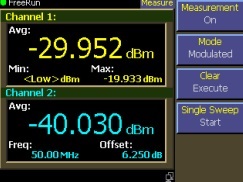Radio frequency (RF) antenna test equipment is essential for accurately measuring and testing wireless communication devices operating at various frequencies. These devices include smartphones, routers, and satellite communication systems. RF test equipment relies on the transmission and reception of radio waves to provide accurate results. They allow engineers and technicians to evaluate the performance of wireless devices by measuring their signal quality, frequency response, power output, and other important parameters. Each RF tool is designed to perform specific tests and measurements.
Additionally, RF antenna test equipment together constitutes a comprehensive toolkit for engineers and technicians. With the growing demand for wireless communications and the evolving technological landscape, RF test and measurement equipment is required for the design, testing, manufacturing, and commissioning of RF instruments. RF test and measurement instruments are used in the development of all devices that utilize RF technology, including televisions, radios, Wi-Fi, mobile phones, and GPS.
RF test and measurement equipment:
1. Spectrum Analyzer
The first type of RF test and measurement equipment is the spectrum analyzer. The term spectrum generally refers to a range of frequencies. For the radio spectrum, specialized spectrum analyzers are used to detect and measure frequencies and the types of signals within them, including signal power and modulation. The most basic functions of a spectrum analyzer are to display power versus frequency and to measure RF location and RF volume. Analyzers measure power relative to other powers, expressed in decibels (dB).

2. Signal Generators
A wide variety of devices, such as mobile phones, car remote controls, and GPS satellites, generate RF signals. Signal generators can generate different types of RF signals for designing and testing RF devices such as receivers. These signals range from simple unmodulated signals to complex modulated signals used in most wireless applications. Signal generators allow the user to control all parameters of the generated signal, including power, frequency, and modulation.
Spectrum analyzers and signal generators are a common test and measurement instrument combination. For example, if the device under test (DUT) is an amplifier, a signal generator can be used to generate the signal sent to the DUT. The amplified signal can then be measured and analyzed using a spectrum analyzer.
3. Network Analyzers
In the RF world, devices with one or more ports form a network, each of which can transmit, reflect, or absorb RF energy. These are typically components within a system, but mobile phones have multiple components that can be referred to as "networks." A new type of instrument for measuring network parameters, it can directly measure the complex scattering parameters of two-port and single-port networks, whether active or passive, reciprocal or irreciprocal, and provide the amplitude, phase, and frequency characteristics of each scattering parameter using a swept frequency method. When testing a network, RF is injected into one port and the amount of RF reflected from that port and from the other ports is simultaneously measured. This test also measures the degree of network-induced delay and how the network alters other characteristics of the injected signal.
Network analyzers are also known as vector network analyzers (VNAs).
4. Power Probes
Power probes can be used for simple received power measurements. Their basic function is to report power in digital form, such as 10.92 dBm. While not as precise as the other instruments mentioned above, power probes are widely used in the RF field and are commonly found in most RF labs.
RF antenna test equipment is essential for accurately measuring and testing wireless communication devices operating at various frequencies. These devices include smartphones, routers, and satellite communication systems. RF test equipment relies on the transmission and reception of radio waves to provide accurate results. They allow engineers and technicians to evaluate the performance of wireless devices by measuring their signal quality, frequency response, power output, and other important